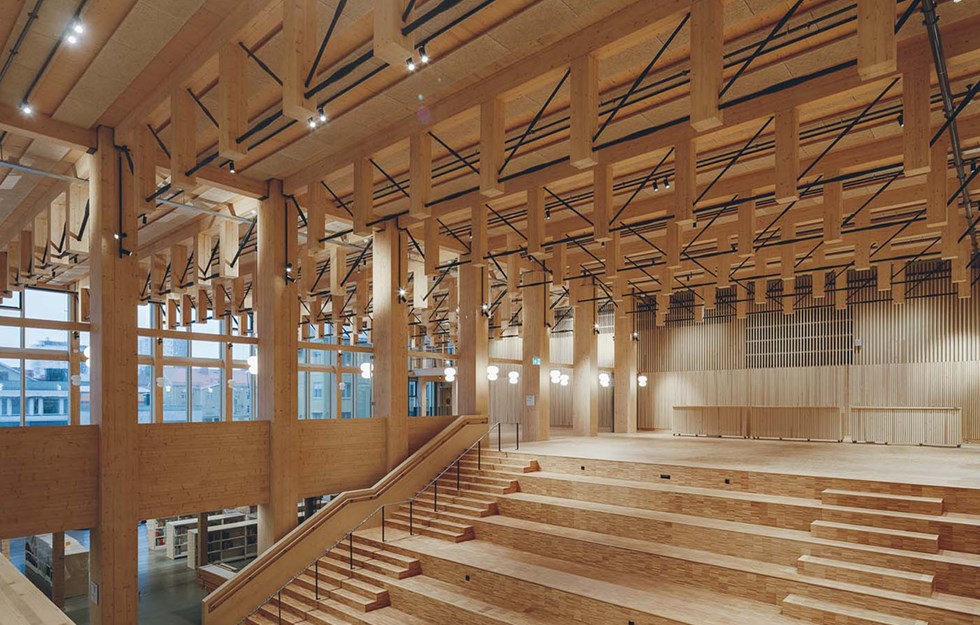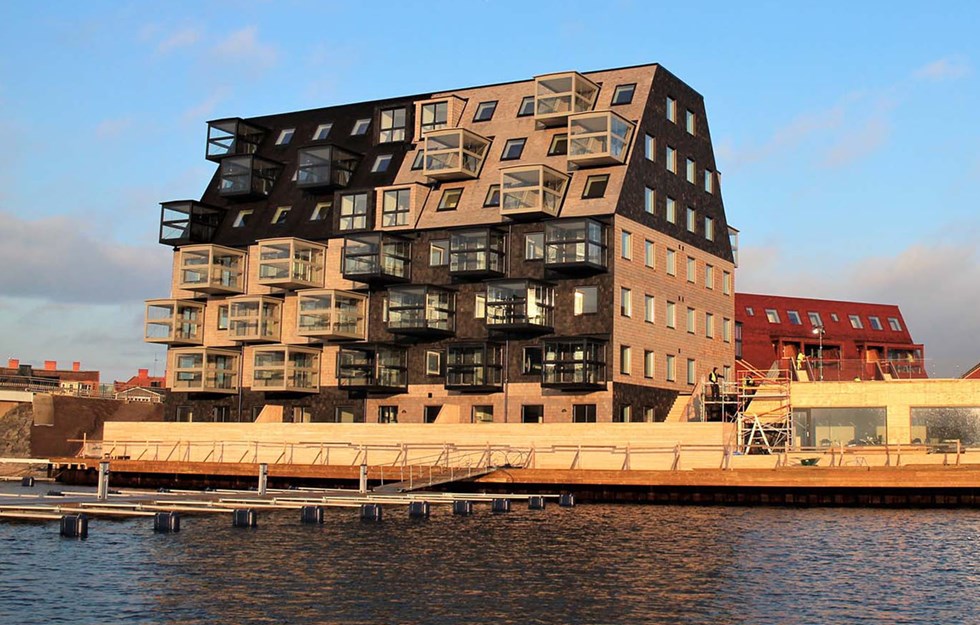Although Sweden has a long tradition of constructing one- and two-story buildings in wood, interest in wood as a construction material has increased in recent years. Wood has excellent technical and climatic advantages and growing numbers of people are choosing wood for larger and taller buildings. Currently, modern wood construction of multi-storey buildings accounts for close to 20 per cent of the Swedish market.
Wood is a fossil-free, renewable material with low energy use in processing and manufacturing building components and building systems. Built-in wood products also store carbon during the entire life of a building, which is beneficial from a climate perspective.
“Furthermore, industrial wood construction, with a strong focus on efficient processes, has excellent potential to reduce resource waste with lower costs and reduced climate impact,” says Ryberg Ågren.
Several examples of interesting wood construction projects in Sweden:
Sara Culture House
Sara Culture House was opened in September 2021. The multi-award-winning building, with its 20 floors, is one of the world’s tallest wooden buildings. The building houses six theatre stages, a city library, two art galleries, a conference centre, restaurants and a hotel. Estimates suggest that the building will sequester around 9,000 tonnes of carbon dioxide during its lifetime. Architect: White Arkitekter. Developer: SBB i Norden. Photo: Jonas Westling.

Wooden office
Nodi was one of Sweden’s first wooden office buildings when it was completed in 2021. The designers of the five-story building have chosen to expose as much wooden detail as possible to create a pleasant indoor environment, while keeping its climate footprint low. It has been awarded the Dezeen Architecture Award for Best Office Building. Architect: White Arkitekter. Developer and Photo: Next Step.

Observation tower
Siljansnäs observation tower was Sweden’s first FSC-certified building (one of the leading certification systems for forestry and traceability) and from where it is possible to see virtually all of Siljansringen, Europe’s largest meteor crater. The frame is made from certified timber from Setra’s wood industry centre in nearby Långshyttan. The facade is covered in charred larch wood. Architect: AgnasArk. Developer: Dalarna County Administrative Board on behalf of the Swedish Environmental Protection Agency. Photo: Dalarna County Administrative Board.

Apartment buildings
Kilströmskaj in Karlskrona, southern Sweden, is a development of three apartment buildings with a total of just over 40 apartments. Due to their special construction, the buildings meet standards for passive buildings. Due to the special architectural design, many of the buildings’ walls also serve as ceilings. This places demands on the buildings’ climate shells and therefore cedar shavings dyed in red, black and grey are used, making the facades durable and maintenance-free. Architect: Wingårdhs. Developer: Housing association Lilla Holm. Photo: Elin Åkesson


